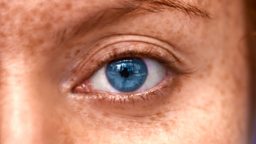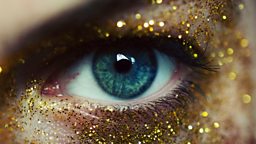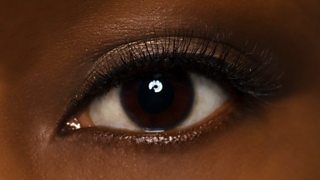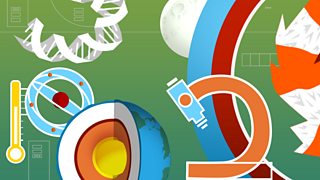Five mind-blowing facts about our genes
Genes are biological recipes that tell our cells how to make the stuff that builds our bodies, send signals that fizz through our brains, and do all the other complicated biochemical business that keeps us alive. In �鶹�� Radio 4 series Ingenious, Dr Kat Arney looks at the stories and science behind different genes to find out how they help to make us who we are, cause or cure disease, and connect us to the rest of life on Earth.
Here are five fascinating things we learned.

1. There’s a gene that makes us more likely to become overweight – and it used to have a shocking name
Many of us put on weight during the pandemic, but can we blame our genes if we no longer fit into our jeans? The answer is, maybe.
The fat mass and obesity related gene – or FTO – is a regular gene which all of us have. However, one version of FTO makes you more likely to be obese, and one version makes you less likely to be obese. Obesity expert Dr Giles Yeo explains: “Around half of the world’s population have one copy of this version of FTO that makes you slightly likely to be heavier, and this makes you on average one and a half kilos heavier and 20 percent more likely to become obese over your lifetime.” A sixth of the population – so more than a billion people – will have two copies of this version of the gene and be 50 percent more likely to be obese.
Rather shockingly, this gene used to have the controversial name “fatso”. But not because of its link to obesity, believe it or not. The moniker emerged because it was the largest of three genes found in a short stretch of DNA associated with problems during development. In 2007, when FTO was linked to BMI and risk for obesity, scientists thought it was time for a rebrand.
2. The “warrior gene” has been used in court as a defence for brutal crimes
MAO-A - or Monoamine oxidase A to be precise - is a gene that breaks down serotonin, a chemical in our brain that we need to feel good. When MOA-A is less active, explains Psychologist Dr Sally McSwiggan, the result is a higher concentration of serotonin in our grey matter. Some think this results in us becoming more impulsive, more emotional – and more aggressive.
Up to six in ten of us are walking around with the low activity “warrior” version of MAO-A, and most will never commit a crime.
A study conducted by Professor of Clinical Psychiatry Dr Jari Tiihonen compared 800 violent and non-violent prisoners to look for a link between this gene and violent behaviour. He found that inmates carrying a certain version of MAO-A were indeed more likely to commit violent crimes. But this doesn’t mean anyone who carries the gene is destined for a life of brutality. In fact, up to six in ten of us are walking around with the low activity “warrior” version of MAO-A, and most will never commit a crime. This hasn’t stopped lawyers bringing their client’s DNA in to the courtroom, however , in the hope of getting them off the hook.
In the small town of Hamlin, Arkansas, Rene Patrick Bourassa violently beat 80-year-old Lillian Wilson to death with the brass cross from the communion table in her local church. In his defence, his legal team used the fact that Bourassa had the “warrior” version of MAO-A. He was found guilty of capital murder, but spared the death sentence. His DNA may have saved his life.

3. We share the “eyeball gene” with every living creature
PAX6 is the gene that tells an embryo to build an eye. It is expressed very early on, as geneticist Professor Veronica Van Heyningen explains, only a week or two after fertilisation in the human embryo. Before the brain is even really a brain – more a tube of nerve cells – the eyes begin to “bud out”. PAX6 is then expressed in all different layers of the eye from the retina to the cornea to the lens.
It isn’t easy for scientists to study PAX6, but one study has revealed an unlikely connection with another creature’s eye growing gene – the fruit fly. Dr Patrick Callaerts ran experiments where he activated the gene (confusingly known as the “eyeless” gene) in flies’ legs. He found that they would start growing eyes right there – on their limbs. His team then put the human PAX6 gene into the flies and, incredibly, the same thing happened: the flies grew normal fly eyes. In transpired that PAX6 and “eyeless” are just different names for the same master control gene, which tells an embryo to build an eye, whether it’s in a fly or a human.
And they learned something even more fundamental - wherever you find eyes, you find PAX6. From fish to flatworms, pandas to parakeets, wallabies to water fleas – it’s ubiquitous. The same gene that makes our peepers is behind the eyes of every other animal, from a tiny fruit fly to a gigantic blue whale.
4. Only one in ten people genetically at risk of Huntington’s disease choose to get tested
Huntington’s disease is an inherited neurological disorder which stops parts of the brain working properly over time. Initial symptoms can include difficulty concentrating and involuntary movements of the limbs and body. There's currently no cure for Huntington's disease or any way to stop it getting worse.
In fact, only about one in ten people at risk choose to get tested. Perhaps understandable given the fact there is currently no cure.
The gene responsible is called Huntington. As with all genes for diseases, we all have two copies of Huntington, one from our mum and one from our dad. But in people who develop Huntington’s disease, at least one of those copies has an unusual glitch. The fault is in a repeating sequence in the gene called a CAG. Normally there are twenty of these repeats but in Huntington’s disease the CAG expands. “When you get to 40 of the CAG repeats you will definitely develop the disease if you live long enough,” explains Dr Sarah Tabrizi, Professor of Neurology and Director of the Huntington’s Disease Centre at UCL.
Since the 1980s it’s been possible for people in affected families to get tested for the Huntington’s gene, which reveals their risk of developing the disease and the chance of passing it on to their children. But it’s not a simple decision. In fact, only about one in ten people at risk choose to get tested. Perhaps understandable given the fact there is currently no cure. A large-scale trial for a new drug raised hopes, but it did not halt symptoms in sufferers and the trial was stopped. However, Dr Tabrizi remains hopeful. “We will find treatments,” says the neuroscientist.
5. One in a hundred of us are naturally immune to HIV
Stephen Krone lived in New York through the heyday of the gay scene in the 1970s and early 80s. He watched as one after another of his friends, including his boyfriend, were struck down by the mysterious disease that was ravaging their community. But Krone was never affected. Why?
Scientists learnt that a gene called CCR5 is the crucial portal by which HIV infects immune cells. And a specific version of the gene, called delta 32, seemed to protect against the virus. Dr Stephen O’Brien discovered that people who had two copies of CCR5-delta32 were never found among HIV infected individuals, which he describes as “remarkable statistically.” It seemed that if you carried this genotype you could not be infected, ever. It was because these individuals simply had no doorway by which HIV could enter cells. “They were walking around as this rare but very, very noticeable group who were genetically resistant to the infection of HIV,” says Stephen. It was a ground-breaking discovery: “It was really the first time that anybody had identified a human mutation which was good for you in the sense that it protected you from a deadly infectious disease – AIDS.”
Up to one in five people with European ancestry have a single copy of the protective version of CCR5. One in a hundred have two – giving them complete protection from HIV.






